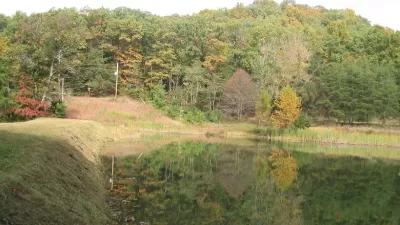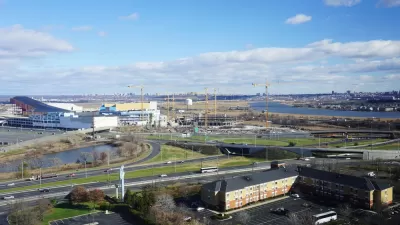The Hackensack River in New Jersey, suffering the ill effects of a century of industrial impacts, is badly in need of environmental remediation. The U.S. EPA announced this week that it will study the river as a potential Superfund site.
"In an acknowledgment that the Hackensack River remains seriously polluted with a century of industrial waste, the federal government will consider adding the river to the federal Superfund list, a program reserved for the country’s most contaminated sites," reports James O'Neill.
Environmental protection groups like the Hackensack Riverkeeper have made strides in cleaning the river and its watershed, but the damage remains, to a certain extent, intractable. Bill Sheehan, executive director of the Hackensack Riverkeeper, is quoted in the article: "It wasn’t easy to convince me to take this route, especially since we’ve been the chief cheerleader for the river and done everything we could to celebrate the river and get people more involved in it….But the sediment is still horribly contaminated, and if we’re really going to give the river back to the people it belongs to, we need to get the sediment cleaned up."
As for what the assistance of the U.S. EPA warrants the site: "Superfund status for the 17-mile stretch of the river would prompt a multiyear investigation into both the extent of contamination and which companies would be responsible for cleanup costs, followed by more study to determine the best cleanup plan, which could include dredging and capping contaminated sediment."
New Jersey is the nation's capital of Superfund sites, with 114 in total. According to O'Neill, there are six Superfund sites in the Hackensack River's watershed, an ecosystem known as the Meadowlands.
FULL STORY: EPA considering Hackensack River for cleanup plan

Maui's Vacation Rental Debate Turns Ugly
Verbal attacks, misinformation campaigns and fistfights plague a high-stakes debate to convert thousands of vacation rentals into long-term housing.

Planetizen Federal Action Tracker
A weekly monitor of how Trump’s orders and actions are impacting planners and planning in America.

In Urban Planning, AI Prompting Could be the New Design Thinking
Creativity has long been key to great urban design. What if we see AI as our new creative partner?

King County Supportive Housing Program Offers Hope for Unhoused Residents
The county is taking a ‘Housing First’ approach that prioritizes getting people into housing, then offering wraparound supportive services.

Researchers Use AI to Get Clearer Picture of US Housing
Analysts are using artificial intelligence to supercharge their research by allowing them to comb through data faster. Though these AI tools can be error prone, they save time and housing researchers are optimistic about the future.

Making Shared Micromobility More Inclusive
Cities and shared mobility system operators can do more to include people with disabilities in planning and operations, per a new report.
Urban Design for Planners 1: Software Tools
This six-course series explores essential urban design concepts using open source software and equips planners with the tools they need to participate fully in the urban design process.
Planning for Universal Design
Learn the tools for implementing Universal Design in planning regulations.
planning NEXT
Appalachian Highlands Housing Partners
Mpact (founded as Rail~Volution)
City of Camden Redevelopment Agency
City of Astoria
City of Portland
City of Laramie





























